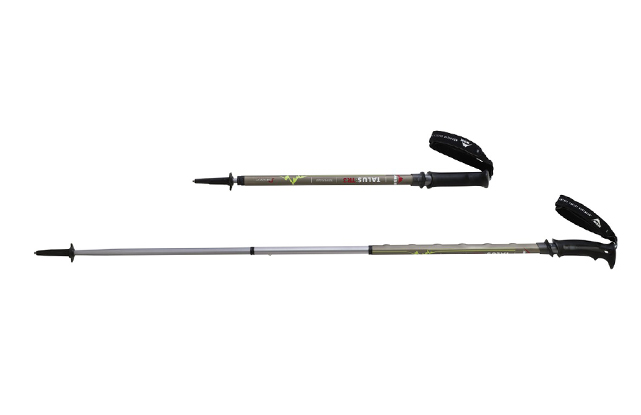Why are trekking poles so useful? Chris Townsend reviews the latest walking poles for the outdoors. On test MSR Talus TR-3 walking poles
The latest trekking poles from MSR have a couple of innovative and effective features that make them stand out from other poles. The first is the asymmetrical hexagonal shape of the upper two sections, which means that the sections can’t rotate inside each other. I also found that my hand was less likely to slip when holding the shaft below the grip. The second original feature is the adjustment system. All adjustments are with studs that lock positively and can’t slip. The bottom section is fixed length with just one stud. The top section is fixed length too but slides up and down the middle section locking into place at 5cm intervals from 105 to 130cms. The adjustment is controlled by a sliding collar below the grip called the trigger release. Pull this up, which can be done with one hand, and the upper section slides over the middle one. MSR says all adjustment can be done with one hand. I found this true when shortening the pole, including all the way to the packed length. Lengthening the pole took two hands however but was still easy and quick to do. A fair amount of force is needed to pull the trigger upwards – you need quite strong fingers! The Talus poles also have comfortable grips and soft straps with breathable inserts. The latter adjust with Velcro and are, unfortunately, on the short side. I found them okay with medium gloves but getting thick mitts through them was an effort and not something I’d like to do on a cold windy hill.
The Talus trekking poles feel very tough and the adjustment system is very secure. They are a bit heavier and cost a bit more than many poles but the quality is high.
Reviewed in April 2015 Issue







